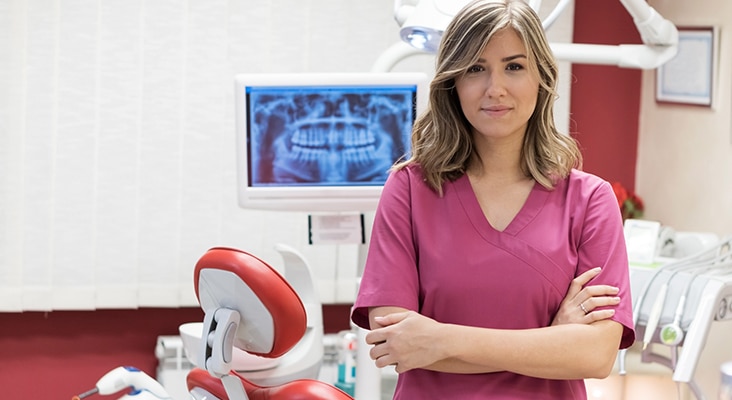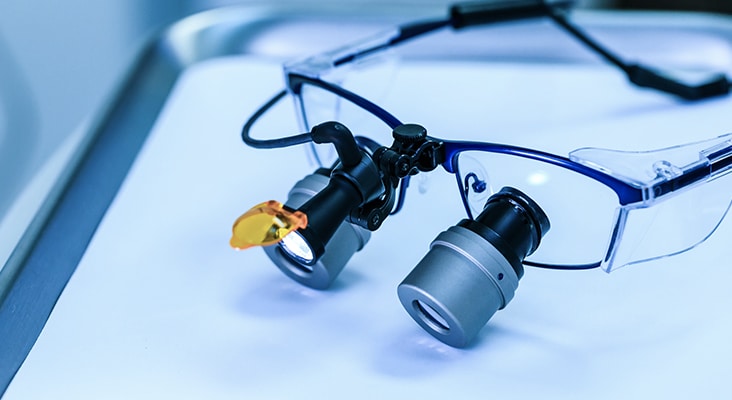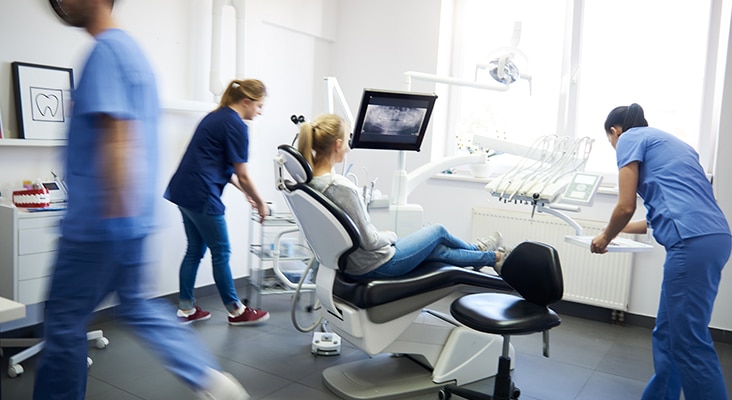Improve the Ergonomics of Your Workspace
Oral health professionals are at risk for fatigue and discomfort due to static positions, poorly designed workspaces, and the exertion of repetitive and forceful motions.

Oral health professionals are at risk for fatigue and discomfort due to static positions, poorly designed workspaces, and the exertion of repetitive and forceful motions. This can lead to the development of musculoskeletal disorders, decreased career length, and impaired quality of life. Proper ergonomics is key to supporting the musculoskeletal health of clinicians. Ergonomics is defined as maximizing efficiency and safety in the workplace through strategically positioning how people work and designing the function of the work area. According to the Occupational Safety and Health Administration (OSHA), identifying the problem is an important step to improving ergonomics in the workplace. This includes a careful, periodic observation of the workplace and an individual’s work practices.
Photo Credit: BakiBG / iStock / Getty Images Plus

Maintain a Neutral Position
The clinician’s primary goal should be obtaining and maintaining a neutral position throughout the day. At the beginning of each day, clinicians should properly set their chair to what is most comfortable and allow for appropriate positioning. Additionally, posture should be checked during each appointment at specific times to ensure they are maintaining proper positioning. For example, at the start of a new quadrant while scaling, a clinician can check his or her posture and positioning. This is a simple, quick check that can help decrease operator fatigue and increase safety.
Photo Credit: leaf / iStock / Getty Images Plus

Fulcrums and Loupes
During instrumentation, clinicians need to maintain a neutral wrist where the wrist is straight and in line with the forearm. Appropriate fulcrums are vital to assist in control of the instrument and reduce muscle load in the hand. Additionally, clinicians should implement a wrist-forearm motion while instrumenting and avoid excessive finger movements. Loupes may help enhance body posture and reduce strain. However, loupes must be properly fitted by an experienced manufacturer representative. Ill-fitting loupes and improper use can place the clinician at an increased risk of musculoskeletal disorders. To increase illumination in the oral cavity, a headlight that attaches to safety glasses or loupes may be helpful. Headlights should be lightweight with a portable battery pack.
Photo Credit: vmargineanu / iStock / Getty Images Plus

Chair and Glove Selection
Chair design can support proper positioning and clinicians should carefully consider what chair is best suited for them. Following are some important characteristics of a well-designed chair: stability, adjustable for proper height and incline positioning, base with wheels to allow maneuverability, padded seat with waterfall edge, and convex lumbar support that is adjustable to accommodate varying clinician heights. Another important consideration is glove selection. Gloves need to properly fit the clinician’s hands because loose-fitting gloves can decrease control of instruments and tight-fitting gloves can constrict blood circulation.
Photo Credit: ttatty / iStock / Getty Images Plus

Workspace Design
Workspace design should be simple and easy to navigate. Clinicians should arrange their workspace for maximum efficiency, reduce the number of controls, and place everything in consistent patterns. The light, bracket tray, handpiece, suction, gauze, and anything else needed during an appointment should be easy to access to prevent awkward movements such as twisting and leaning. In order to ensure the clinician can easily work in the 12 o’clock operator position, a clearance of 20 inches to 22 inches is needed between the dental chair headrest when it is in supine position and the counter.
Photo Credit: sl-f / iStock / Getty Images Plus

Proper Patient Positioning
Patients should sit all the way back in the dental chair with their heads placed on the headrest properly. Headrests should be easily adjustable in order to accommodate different sizes and needs. Contouring pillows or a chair with a double-articulating headrest can help with proper patient positioning. Additionally, the patient chair should be able to move around, if needed, to provide adequate space between the headrest and counter.

